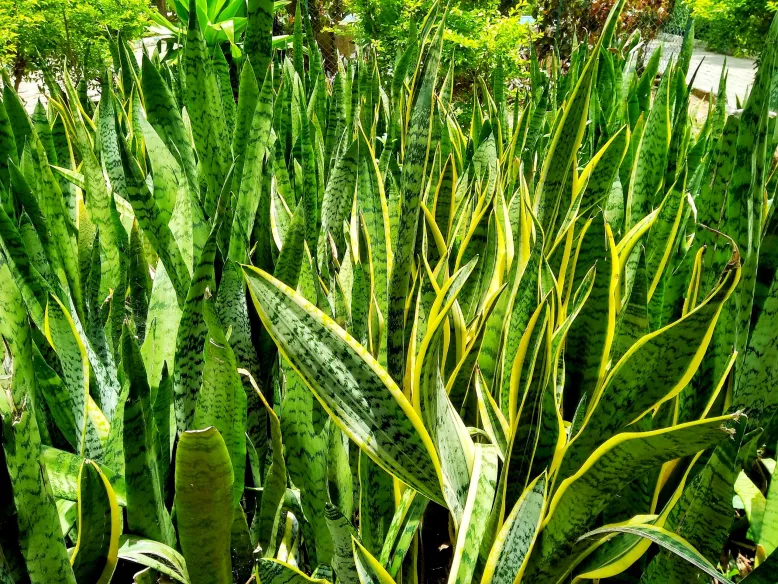Snake Plant: How To Grow And Care For Snake Plant

The snake plant is one of the most popular and hardy houseplants in the family Asparagaceae. It is known as a snake plant due to its long leaves having sharp and pointed ends and the resemblance of its leaf pattern to snake skin. In this article we will explain how to care for snake plants.

The snake plant, which is commonly known as the mother-in-law’s tongue plant, has some other common names, like Saint George’s sword, viper’s bowstring, devil’s tongue, snake tongue, etc.
Its scientific name is Dracaena trifasciata, and it was earlier known as Sansevieria trifasciata.
The snake plant is a tropical flowering plant native to West and West Central Africa.
Some Interesting Facts About Snake Plants
The snake plant is a popular houseplant due to its air-purifying properties. It absorbs toxins in the air through its leaves and releases oxygen.
This is very interesting, as most of the other plants release carbon dioxide at night or in the dark due to the absence of photosynthesis. The snake plant is an ideal bedroom plant due to this quality.
There is a false claim going around on the internet every now and then about a NASA study on snake plants. According to this claim, six to eight snake plants in a room without any ventilation are sufficient for human survival, according to NASA research.
Consequently, according to the claim, the organization suggests 15 to 18 plants for a 1,800-square-foot house. But this is a false claim. Because though the snake plant is found to clean the air of toxins and release oxygen, it cannot sustain human life in airtight enclosures.
The snake plants are very hardy and are famous for their durability. It can tolerate neglect and harsh conditions. It is, in fact, very difficult to kill the snake plant.
The mature snake plant is known to grow up to 6 feet tall in optimal conditions.
Some Commonly Asked Questions About Snake Plants
Are snake plants toxic?
Yes, unfortunately, the roots and leaves of the snake plants contain saponins, which are toxic to both humans and animals.
When ingested by mistake, it can cause vomiting, nausea, and diarrhea in humans and pets.
Are snake plants indoor or outdoor plants?
Though snake plants can be grown in low to medium light, it should be kept in mind that the snake plant likes bright in-direct sunlight to grow properly. You can grow the snake plants in both indoor and outdoor conditions.
In warmer areas, it can be grown outdoors in shades, but in areas with harsh winters, it is advised to bring the plant indoors to save it from frost and snow. Due to its shade-loving nature, it is grown mostly as an indoor houseplant.
Is a snake plant a succulent?
Yes, the snake plants are popular succulents. It means that the snake plants have water-storing tissues. Being succulent, the snake plant’s watering needs are very low, which makes them drought-tolerant plants.
How To Propagate Snake Plant
The easiest method to propagate the snake plant is through cutting. You can follow the below steps to propagate the snake plant:
- Cut a leaf off of the parent plant. Make sure to remove the leaf cutting from the base of the plant.
- Take a jar filled with water. Immerse the leaf’s cut end in water.
- Put the jar in bright, indirect sunlight.
- Ensure to change the water at least once every two weeks.
- It will take a month for the roots to emerge. However, the full development of roots takes three to four months.
- When roots are more than an inch long, transfer the cutting into potting soil mix in a pot.
How To Care For Snake Plants
Location
As already explained, the snake plant can grow in low and medium light conditions, but it likes bright, in-direct sunlight to grow. So place them in an area that receives six to eight hours of bright, indirect sunlight.
You can plant them directly on the ground in an area that receives morning sunlight and afternoon shade. If the winter in your area is harsh with snow and frost, don’t forget to bring them inside during the winter.
The snake plant grows best at temperatures above 50 degrees Fahrenheit (10 degrees Celsius).
Soil
The snake plant likes well-drained soil. As snake plants are succulent plants, they do not like their potting soil mixture to retain too much moisture. You can grow snake plants in a standard cactus-potting soil mixture.
If you want to prepare your own potting soil mix for snake plants, you can do so at home. To prepare the potting soil mix for the snake plant at home, the following things should be kept in mind:
- Potting soil mix should be well drained and should not have waterlogging properties.
- Potting soil mix should be porous to provide good air circulation to roots.
- Though the snake plant needs nutrients for growth, it does not like very rich soil in nutrients. Potting soil should not contain too many nutrients.
- The snake plant likes slightly acidic to neutral soil pH.
You can prepare the potting soil mix for the snake plant at home by adding 2 parts garden soil, 1 part sand, 1 part compost, vermicompost, or organic manure, and 1 part perlite.
Watering
The snake plant does not like overwatering; in fact, this is the one major thing that can cause plant death for an otherwise very hardy snake plant.
As already explained, the snake plant is a succulent plant, and it stores water in its leaves. This feature makes the snake plant drought-tolerant, with very little watering requirement. Overwatering, on the other hand, can cause root rot in snake plants.
Always water when the soil feels dry to the touch. While watering, water until it freely flows out of the pot’s drainage hole, and then wait for the soil to dry before next watering.
Fertilizer
If you have added vermicompost, compost, or organic manure to the potting soil mix, the snake plant does not need additional nutrients for a year. Additionally, if you want better plant growth, you can feed your snake plant balanced N-P-K: 10-10-10 fertilizer once a month.
Avoid fertilizing in winter, as snake plants are dormant in this season.
Pest and Disease
The snake plant is resistant to most pests and diseases. Its leaves and roots contain saponins, which keep most pests and diseases at bay.
But sometimes snake plants can fall prey to aphids, mealybugs, spider mites, and thrips, so it is advised to regularly inspect the plant. If the plant is infested with insects, you can spray a neem oil mixture on the plants every alternate day until the problem is resolved.
The biggest plant killer for snake plants is overwatering, as it can cause root rot in the plants. You can avoid this by watering only when the soil is dry.
If there is discoloration in plant leaves, it can be a sign of over- and under-watering and pest infestation in the plants. Inspect the plant regularly and take the necessary action.
Tags: #Snake Plant Care, #How To Care For Snake Plant, #How to Plant Snake Plant, #Snake Plant care for beginners, #Snake Plant care tips, #AmazeGarden.Com, #Plants Care Tips, #Gardening, #Kitchen Gardening, #Terrace Gardening, #Backyard gardening, #Container Gardening, #Urban Gardening, #plants Care, #Snake Plant Care, #Snake Plant Care Tips,









